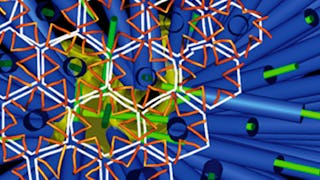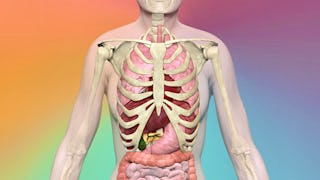This is a unique online course which teaches students the basics of blood film analysis. This course is specifically tailored to those with a background in Medical Science, Medicine or Pathology who are studying or starting work in a haematology laboratory but also serves as a valuable continuing education resource. To be successful in this course, access to a haematology laboratory is desirable but not essential.

Enjoy unlimited growth with a year of Coursera Plus for $199 (regularly $399). Save now.

Blood Film Morphology - A Practical Guide

Instructor: Matthew Wright
14,809 already enrolled
Included with
(113 reviews)
Recommended experience
What you'll learn
After succesfully completing the course, the learner will have achieved an intermediate level of competence in interpreting & analysing blood films.
Skills you'll gain
Details to know

Add to your LinkedIn profile
See how employees at top companies are mastering in-demand skills

There are 5 modules in this course
This 'Course Introduction' Module 1 describes the background to the blood film. It provides you with an overview of what takes place in a laboratory when a film of blood is analyzed. '1.1 - Course Overview' describes the background to the blood film. It explains how a FBC analyser works in '1.2 - The Analyser' and the potential sources of error in analyser results. It then explains which blood counts should trigger the making of a blood film and how that blood film is made in '1.3 - Importance of Making a Blood Film'. The '1.4 - A methodical approach to blood film analysis' lesson ends by suggesting and demonstrating a systematic method for blood film analysis. Module 1 ends with a graded 'End of Module 1 Quiz' for you to complete and a supplementary reading list.
What's included
23 videos1 reading2 assignments2 peer reviews1 discussion prompt2 plugins
This 'Red Cell Morphology' module takes you through a systematic method of examination of red cell morphology. It starts with a basic approach in '2.1 Red Cell Morphology Basics', then examines red cell quantity and red cell quality in '2.2 Describing Microcytic, Macrocytic and Normocytic Anaemias in blood films' and '2.3 Recognising and describing common poikilocoytes'. At each step, you are taught a method, provided with the theoretical framework for interpreting abnormalities, and shown examples of abnormalities highlighting their clinical significance in '2.4 Recognising and describing red cell inclusion'. 'The 'Red Cell Morphology' Module ends with a graded 'End of Module 2 Quiz' and a supplementary reading list.
What's included
22 videos1 reading3 assignments2 peer reviews
This 'White Cell Morphology' Module 3 takes you through a systematic method of examination of white cell morphology, following the template for blood film analysis in '3.1 A framework for analysing white cell quantitative disorders'. It starts by examining problems of white cell quantity, then examines the many important variants of white cell quality by using a a unique structured process for analysing an abnormal white cell population in '3.2 Analyzing an abnormal leukocyte population'. This takes you through the morphology of reactive white cells, lymphoproliferative diseases, leukaemias and myelodysplasia in '3.3 Analysing lymphoproliferative disorders', '3.4 Analysing acute leukaemias' and '3.5 Examining qualitative changes in white cells' . At each step you are taught a method, provided with the theoretical framework for interpreting abnormalities, and shown examples of abnormalities highlighting their clinical significance. You will be required to complete a grade End of Module 3 quiz and look up the supplementary reading list.
What's included
31 videos1 reading4 assignments3 peer reviews
This '4Ps of Morphology - Platelets, Pregnancy, Paediatrics and Parasites' module deals with an assortment of important specific areas of blood film morphology. It first completes the systematic analysis of the blood film by discussing quantitative and qualitative changes in platelets in '4.1 Platelets (Thrombocytopenia & Thrombocytosis)'. In '4.2 Pregnancy', we then discuss the important physiologic and pathologic changes in the FBC and film during pregnancy. The '4.3 Paediatric' lecture emphasises that children are not just little adults by showing how the normal ranges for the FBC and normal appearance of films can differ at different ages, and then discussing a framework for morphologic diagnosis in paediatric anaemia, thrombocytopenia and pancytopenia. The '4.4 Parasite' lesson concludes with a review of malaria – demonstrating the lifecycle of the parasite, the morphologic appearance of different species, and a system to distinguish between different species. You are expected to complete a graded 'End of Module 4' quiz and look up the supplementary reading list.
What's included
19 videos1 reading3 assignments4 peer reviews
In this 'Live Blood Film Analysis - Putting it all together' module, we demonstrate the use of our method for blood film analysis using videos of real slide examinations for the five cases. The presentation format for each case is similar: each case starts by providing a case history and full blood count (FBC) parameters. You are encouraged to consider a differential diagnosis (DDx) for each case. We will follow the template for blood film analysis. Finally we arrive at a morphologic conclusion and ask you how you can help the clinician reach a diagnosis based on the blood film. The case studies are not assessed. However, viewing them is necessary to see how we apply our method and integrate the concepts taught in Module 1 - 4. As this is a module putting everything you have learned together in individual case studies, there will be no graded 'End of Module 5 quiz' for you to complete
What's included
8 videos1 reading1 assignment
Instructor

Offered by
Explore more from Basic Science
 Status: Preview
Status: PreviewJordan University of Science and Technology
 Status: Free
Status: FreeCaltech
 Status: Preview
Status: PreviewUniversity of Glasgow
 Status: Free Trial
Status: Free TrialRice University
Why people choose Coursera for their career




Learner reviews
113 reviews
- 5 stars
85.84%
- 4 stars
11.50%
- 3 stars
0.88%
- 2 stars
0%
- 1 star
1.76%
Showing 3 of 113
Reviewed on Nov 11, 2022
Very good course. I learnt a lot of important things throughthis course.
Reviewed on Oct 21, 2023
I am very pleased to get this certificate. I would like to take this opportunity to give thanks to all the academic staff and the Coursera team for my achievement.
Reviewed on Sep 19, 2023
this is very informative and summarized course which wold help me i my professional life. I am thankful for the mentor who provided this unique course.
Frequently asked questions
To access the course materials, assignments and to earn a Certificate, you will need to purchase the Certificate experience when you enroll in a course. You can try a Free Trial instead, or apply for Financial Aid. The course may offer 'Full Course, No Certificate' instead. This option lets you see all course materials, submit required assessments, and get a final grade. This also means that you will not be able to purchase a Certificate experience.
When you purchase a Certificate you get access to all course materials, including graded assignments. Upon completing the course, your electronic Certificate will be added to your Accomplishments page - from there, you can print your Certificate or add it to your LinkedIn profile.
Yes. In select learning programs, you can apply for financial aid or a scholarship if you can’t afford the enrollment fee. If fin aid or scholarship is available for your learning program selection, you’ll find a link to apply on the description page.
More questions
Financial aid available,
¹ Some assignments in this course are AI-graded. For these assignments, your data will be used in accordance with Coursera's Privacy Notice.





